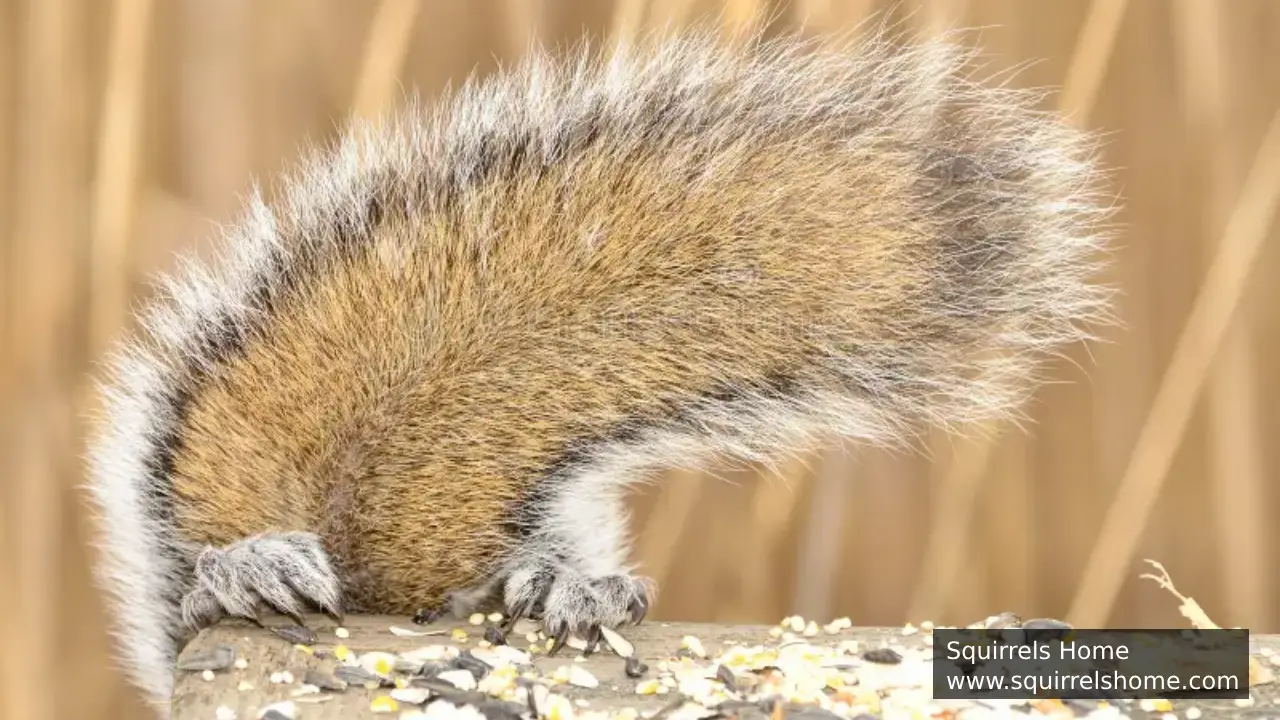A squirrel’s tail is an interesting part of its body, serving many purposes. It’s more than just a cute, fluffy appendage. In fact, it helps squirrels in different ways, ensuring their survival in various environments.
Keeping Balance
One of the main jobs of a squirrel’s tail is to help it stay balanced. Squirrels spend most of their lives climbing trees, running along branches, and jumping between them. Without a way to keep their balance, they could easily fall. The tail works as a counterweight when they move.
For example, when a squirrel jumps from one branch to another, it twists its tail to help guide its direction. If the animal starts to lose balance while running on a narrow surface, it shifts the tail to the opposite side. This motion helps prevent falling. The tail also plays a role when squirrels are standing upright on their back legs, providing extra support.
Communication
Squirrels use their tails to send signals to other squirrels. When a squirrel feels threatened, it flicks its tail rapidly. This movement is a warning sign to others nearby, alerting them to possible danger.
Tail movements also help during social interactions. Squirrels can express different moods by changing how they move their tails. For example, they may flick their tails when they are excited, upset, or trying to establish dominance over another squirrel. This type of communication is very important in the wild, where clear signals can help avoid conflict.
Protection from Weather
The tail is also a natural shield. During cold weather, squirrels wrap their tails around their bodies to stay warm. The thick fur on the tail acts like a blanket, keeping heat close to their bodies. This is especially useful during winter when temperatures drop.
On hot days, the tail provides shade. By curling the tail over their backs, squirrels can block some sunlight. This simple action helps them stay cool when it’s very hot outside. The tail works like a flexible tool, adapting to different weather conditions as needed.
A Tool for Gliding
When squirrels leap from high places, their tails help slow their descent. While they don’t fly like birds, they can control their movements in the air. The tail spreads out during a jump, increasing air resistance. This slows them down slightly and helps them land safely.
This ability to glide short distances is very useful. It allows squirrels to move quickly from tree to tree without going to the ground, where they might face predators. It also makes it easier for them to escape if something is chasing them.
Escaping Predators
The tail is an important part of a squirrel’s defense strategy. When chased by a predator, a squirrel may use its tail to distract or confuse the attacker. Sometimes, predators grab the tail, but the squirrel can break free because the fur and skin of the tail can detach easily. This helps the squirrel escape, even if it means losing part of its tail.
In addition to physical tricks, tail movements help warn other squirrels about nearby threats. By flicking their tails and making alarm sounds, they work together to avoid danger.
Maintaining Body Temperature
Another key role of the tail is regulating a squirrel’s body temperature. During cold weather, it helps retain heat. In contrast, during warmer periods, it helps to cool down the squirrel by increasing airflow. By changing how they position their tails, squirrels can manage how much heat they keep or release.
This ability to adjust to different climates allows squirrels to live in many places, from cold forests to warmer urban areas. Their tails give them a better chance of survival in both hot and cold conditions.
Helping with Balance During Falls
If a squirrel slips and starts to fall, it uses its tail to stabilize its body. The tail helps the squirrel control its position while falling, making it easier to land feet-first. This reduces the chances of getting hurt.
Squirrels are known for their ability to survive long drops without injury. Their tails act like parachutes, slowing their descent just enough to make the landing safe. This is one reason why squirrels can take big risks when moving through trees.
Tail Injuries and Survival
Even though the tail is very useful, squirrels can survive without it. If a squirrel loses its tail to a predator or accident, it faces more challenges. It becomes harder for the squirrel to balance, communicate, and stay warm, but it can still adapt.
Many squirrels with missing tails learn new ways to climb, jump, and protect themselves. Over time, they can still live normal lives despite the loss of this important tool.
Conclusion
A squirrel’s tail is more than just a bushy feature. It helps with balance, communication, weather protection, escaping predators, and temperature regulation. While it may seem like a simple body part, it plays a big role in helping squirrels survive in the wild. Whether they are jumping between trees, warning others of danger, or staying warm in winter, their tails make many of these actions possible.
FAQs
1. Can squirrels control their tails during jumps?
Yes, squirrels use their tails to guide and balance themselves during jumps. This helps them land safely.
2. Why do squirrels flick their tails?
Squirrels flick their tails to send signals. It can mean they feel threatened or are trying to communicate with others.
3. How do tails help squirrels survive cold weather?
The tail works like a blanket, keeping heat close to the body. Squirrels wrap their tails around themselves to stay warm.
4. Do all squirrels use their tails in the same way?
While most squirrels use their tails similarly, how they use them can vary depending on the species and environment.
5. What happens if a squirrel loses its tail?
Losing a tail makes life harder, but squirrels can still survive. They learn to balance differently and continue to live without it.
